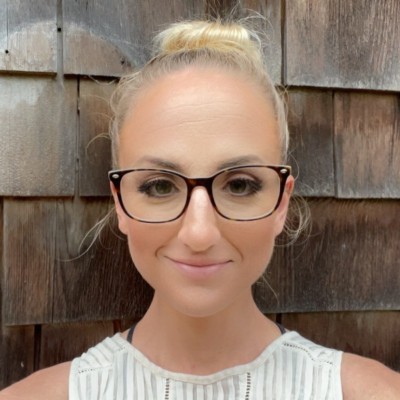Past few years, data science industry trends are mainly revolving around some big names such as artificial intelligence and machine learning along with some newer technologies such as serverless computing, digital twins, and blockchain. Although all these technologies are doing remarkably well, as time goes on it’s also important to take note of the present industry trends so that you can better explore the world of data science. These ever-changing industry trends, as they mature, will shape the future of data science, and help enterprises to use raw data efficiently for making better business decisions. Let’s check the ways by which this will happen.
6 Industry Trends That Define the Future of Data Science
1. Rapidly Growing IoT Networks

The Internet of Things (IoT) is proving to be a key driver of digital transformation for years to come. IDC forecasts, worldwide spending on IoT would maintain CAGR of 13.6% throughout 2017-2022 and surpass $1 trillion in 2022.
Whereas, according to Ericsson the number of cellular IoT connections would reach 3.5 billion in 2023-increasing with CAGR of 30%.

With smart devices such as Apple Siri, Microsoft Cortana, Amazon Echo, and Google Assistant trending in homes to automate specific tasks, the growing IoT trend is drawing more & more organizations to invest.
As organizations bring on IoT technology, every execution plan should address what to do with the future data that is collected.
IoT, a propel for new tools and strategies that will be more capable of processing enormous data, is going to define the future of data science.
Get To Know Other Data Science Students
Sunil Ayyappan
Senior Technical Program Manager (AI) at LinkedIn
Abby Morgan
Data Scientist at NPD Group
Pizon Shetu
Data Scientist at Whiterock AI
2. Transforming ‘Dark Data’ Into Digital Assets

A large portion of the collected data is yet not transformed into a digital format, which means, that data is not yet analyzed. According to IBM, 80% of all data comes from previously untapped, unstructured information. This unstructured data, called ‘dark data’, is expected to be transformed into digital assets because it holds undiscovered, important insights and represents an opportunity lost.
Soon, to tap the potential of dark data, an increasing number of data scientists will focus on ‘dark analytics’, for which they need advanced tools and new skill sets.
3. Quantum Computing

According to Global Digital 2019 reports, the internet reaches 56.1 % of the world’s population-a 9% increase from January 2018. It implies the rate of data creation won’t slow down anytime soon. DOMO’s Data Never Sleeps 7.0 report also proves this. It states, “By 2020, there will be 40x more bytes of data than there are stars in the observable universe”.
As a matter of fact, we need a fast way to process, organize, and extract value from this massive and complex data. Isn’t it?
The search stops at “quantum computing”-The latest industry trend that is still in its infancy.
In classical computing, information is stored in bits that can exist in two states-1 or 0. Quantum computing uses ‘qubits’ instead–allowing for much more data to be stored than in a regular bit.
But, what does that mean for data science?
Quantum computers will be able to process larger amounts of data faster and reduce space/time considerations for many classical computing tasks–including tasks related to data science. Quantum computing will allow data scientists to quickly detect, analyze, integrate, and diagnose from large scattered data sets.
That means, soon, by leveraging the strengths of both quantum computing and classical computing, data scientists will be able to build innovative solutions to problems involving huge datasets.
4. Social Media Landscape

What’s the biggest impact of social media on our lives? The biggest impact is, we are all connected, all the time.
Wondering how it defines the future of data science, think about the enormous data, 3.5 billion active users (one-in-three people in the world) are generating through Facebook, YouTube, Twitter, Instagram, etc.!
We share our emotions and even our innermost thoughts on various social media platforms. It gives unprecedented levels of insight about the user that can directly affect a company’s strategy. That’s why, whenever there’s a slight or massive change or upgrade in social media features, it results in viral campaigns and new advertising ideas from brands.
In this age of dynamism where data will never be static yet will be in massive demand for the user insights it provides, organizations need to adopt a new analytics strategy.
No doubt, adopting a new analytics strategy is going to change the aspects of data science industry trends!
5. Predictive Analysis

For business, big data analytics has always been a key strategy to harness the data and have a competitive edge.
But what would happen if companies can peep into the future and predict their customers’ next action based on historical behavior? This will, certainly, impact the business bottom line and influence results.
And, yes, predictive analytics makes it possible.
If we talk about the use cases of data science and predictive analysis, the best come in the form of trip-planning tools, where customers can set locations, dates, MPM (miles program memberships), and other factors that affect travel details. These products, with tools that allow customers to build their own models to get desired results, mark an evolution toward user-friendly data science.
We’ve even seen such utilization of data science and predictive analysis by influential companies like Airbnb. Airbnb’s case study is among those few data science case studies trending on google.
Whereas, the presentation of these predictive tools in an easy-to-digest, consumer-facing user interface, is exactly what the future has in store for data science.
6. DataOps

DataOps, the concept that started to emerge in 2017, is slowly becoming a critical discipline for any organization to survive in this evolving digital world. Three important reasons for this surge are:
- Data engineering pipeline activities have become more complex, and hence require more integration and governance tools.
- Creating synergy across data is a significant task because multiple LOBs are making independent data decisions.
- Building data infrastructure is a monotonous and time-consuming task, surprisingly on Cloud also.
For providing enhanced data quality, the DataOps applies agile methods involving all the processes from collection to analysis to prediction, testing automation, and delivery also.
Even if you take the keyword “DataOps”, you’ll notice how well it is trending on Google. data science, analytics tools, and platforms are changing rapidly-DataOps will provide a CoE approach to handle this advent of technology.
Since you’re here…Are you interested in this career track? Investigate with our free guide to what a data professional actually does. When you’re ready to build a CV that will make hiring managers melt, join our Data Science Bootcamp which will help you land a job or your tuition back!






